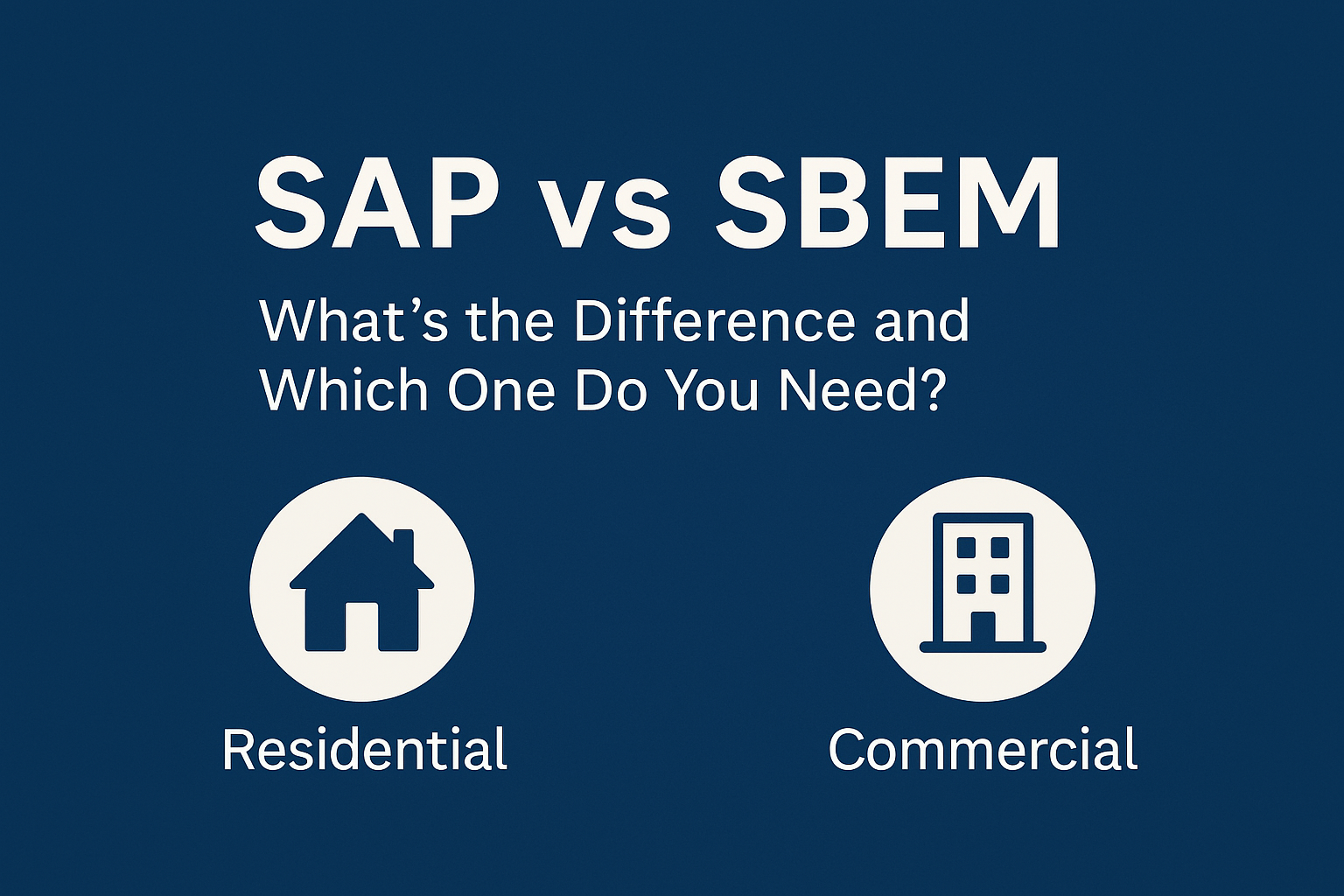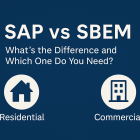When it comes to building compliance and meeting energy performance standards, understanding the difference between SAP and SBEM calculations is key. There’s no denying the importance of assessing how energy efficient a building is, but SAP and SBEM can’t be used interchangeably. Though similar assessments, SAP and SBEM look at different building types and purposes.
To ensure that your building project is being assessed correctly, you need to know the difference between SAP vs SBEM. Choosing the right one from the start can save time, money and confusion during the design, building and approval process. Below, we’ve taken a look at SAP vs SBEM and which one is right for you.
What is SAP?
SAP – which stands for Standard Assessment Procedure – is how the energy performance of residential properties is assessed in the UK. These calculations are a legal requirement for newly built homes, converted dwellings and some extensions, such as those where the newly installed glazing is more than 25% of the new floor area. Required by Planning and Building Regulations, SAP is used to determine and compare how much energy a home will use for day-to-day living. The assessment results in a SAP a score between 1 and 100+, with higher scores indicating better energy performance. Scores above 100 mean the dwelling is so energy efficient it actually produces more energy than it uses.
What is SBEM?
SBEM – which stands for Simplified Building Energy Model – is a way to calculate the energy performance of commercial buildings in the UK, including both new constructions and existing properties undergoing changes. Since 2006, SBEM calculations have been a mandatory requirement, and they’re used to show that a property complies with regulations for commercial buildings.
The calculation takes into account various factors, all of which are looked at to make sure the building in question meets the minimum energy efficiency standards, and also contributes to reducing energy consumption and its environmental impact.
Comparing SAP vs SBEM: The Differences Between the Two
Although SAP and SBEM assessments have a similar purpose, they are designed for very different types of buildings. They’re both used to ensure energy efficiency, but SBEM looks at commercial buildings and SAP looks at residential buildings.
- SAP is for residential buildings, such as homes, flats, conversions and extensions.
- SBEM is different, as it’s for commercial or non-domestic buildings, including offices, shops, schools and other similar buildings.
- Both SAP and SBEM determine energy efficiency, but they look at different reasons for energy use, use different methods to determine how much energy is being used, and have a different way of coming up with a final calculation.
Whereas SAP uses standardised occupancy assumptions for dwellings – for example, by looking at how many occupants a property is likely to have, and how they’re likely to use the space – SBEM accommodates the diverse and often complex energy needs of commercial spaces.
SAP vs SBEM: Which is Right for You?
Choosing between SAP vs SBEM is a lot simpler than you might think. If your project involves a house, flat or any other residential building, you will need a SAP calculation. If your project is an office, shop, school, commercial space or any other non-residential building, you will need SBEM. It really is as simple as determining whether the building is used for residential or commercial purposes.
For mixed-use buildings, you might need both. Each part of the building is assessed using the method that corresponds to its use, either SAP or SBEM.
Putting SAP and SBEM Into Action
Once you’ve looked at SAP vs SBEM, and you’ve determined which calculation is right for your project, it’s time to organise an assessment. This isn’t something that you need to deal with yourself, as the JosTec experts are always on hand to help. At JosTec, we understand how important it is that your building project meets all the necessary energy performance standards. Whether you’re working on a residential or commercial development, our team of expert energy assessors provides the reliable and accurate SAP and SBEM assessments you need.
- Our SAP experts are dedicated to providing precise and reliable SAP calculations for residential properties, including new builds, conversions and extensions. SAP is a key part of ensuring compliance with energy efficiency standards in homes, and our experienced assessors have extensive knowledge of the latest regulations.
- For commercial properties, our team is highly skilled in conducting SBEM assessments. We ensure that our calculations are accurate, up-to-date and in line with the most current regulatory standards. Whether you’re working on a new build commercial development, a refurbishment, or an existing property, our SBEM assessments provide the essential data required for compliance.
Expert SAP and SBEM Assessments
At JosTec, we are committed to providing high quality, reliable SAP and SBEM services that are in full compliance with industry standards. We understand the unique challenges each type of building presents, and we offer tailored solutions for every project, ensuring that your energy performance assessments are completed professionally, efficiently and accurately. Speak to our experts today to find out how we can assist with your SAP and SBEM assessments.



